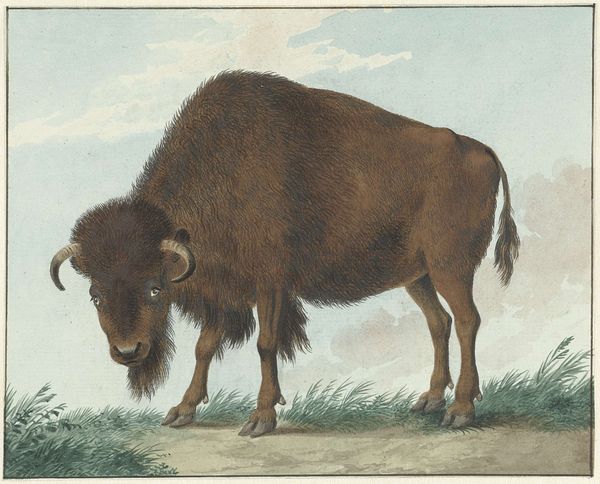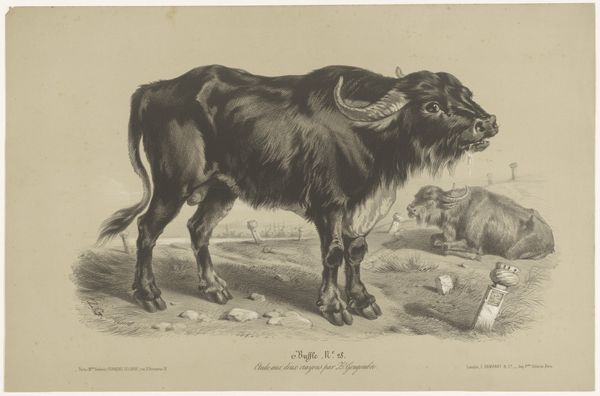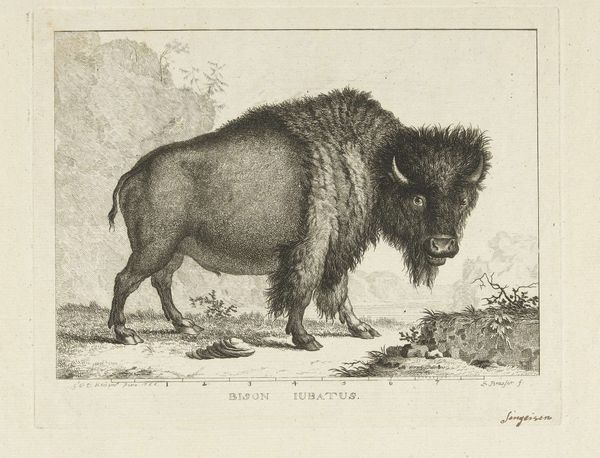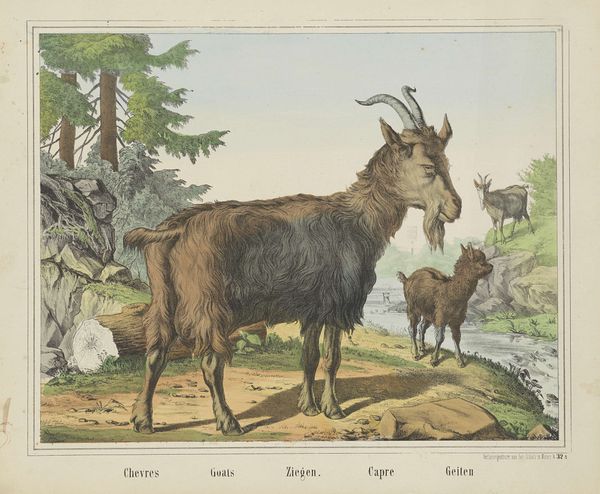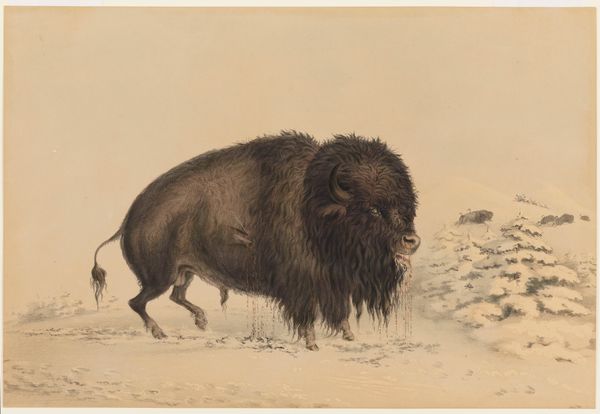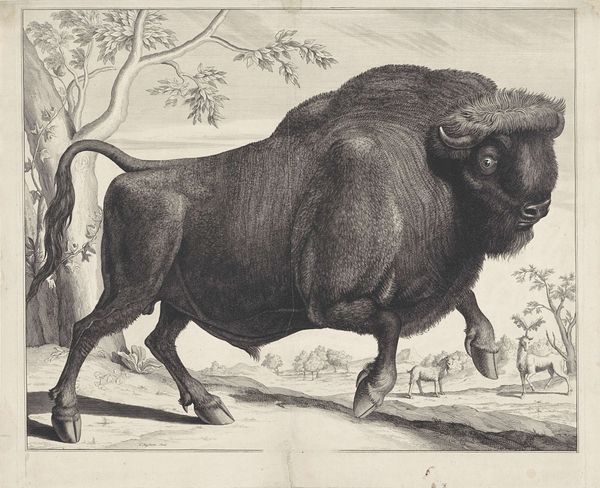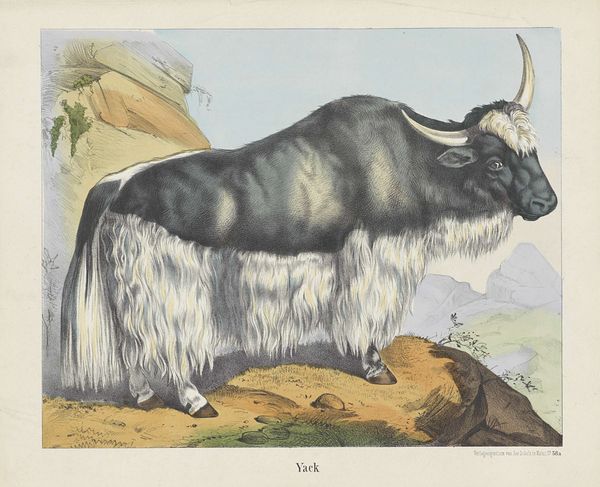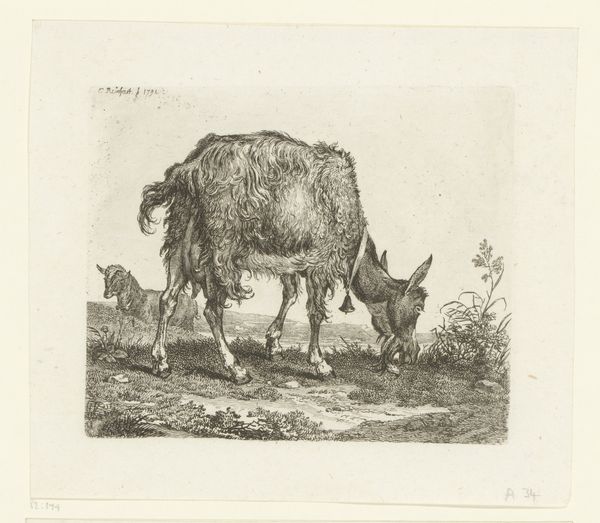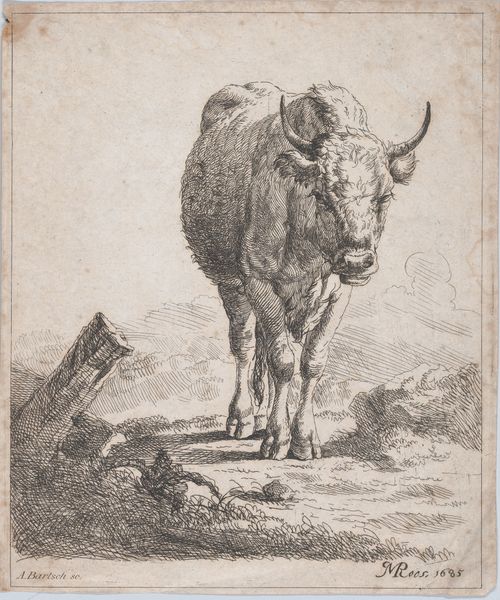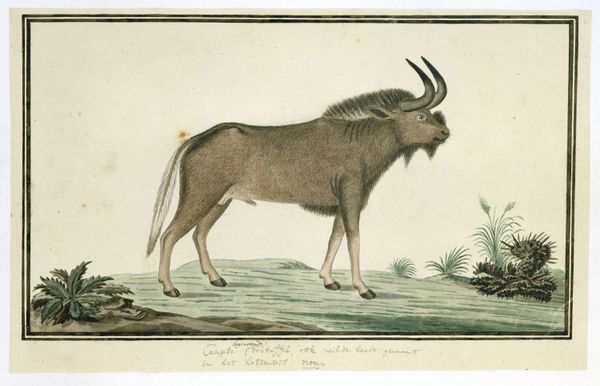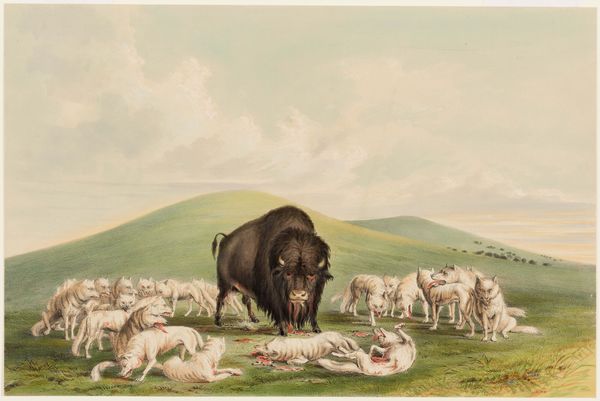
The Viviparous Quadrupeds of North America, vol. II 1851
0:00
0:00
drawing, coloured-pencil, print
#
drawing
#
still-life-photography
#
coloured-pencil
#
animal
# print
#
book
#
landscape
#
coloured pencil
#
watercolour illustration
#
naturalism
#
watercolor
Dimensions: 11 5/16 x 7 7/8 x 2 1/16 in. (28.7 x 20 x 5.2 cm)
Copyright: Public Domain
Curator: Before us, we have a print from John James Audubon’s "The Viviparous Quadrupeds of North America, vol. II," dating back to 1851. The artist masterfully employs watercolor and colored pencil to capture the American Bison. What strikes you upon first viewing? Editor: An impressive figure! Immediately, I’m drawn to the solidity of the buffalo against the backdrop of the plains. The tonal range feels somber, evoking a certain solitude, but a nobility too. It also suggests a very male centred focus. Curator: Note how Audubon constructs form through minute gradations of tone and colour, building a highly textured surface that also models three-dimensionality. This print transcends mere depiction; it verges on evoking a sense of the animal's very being through sheer material rendering. Editor: Absolutely. The bison carries so much cultural weight. Consider the symbology: here is the buffalo as a keystone to life on the Great Plains, embodying concepts of both abundance and sacrifice within many indigenous cultures, its image intrinsically interwoven with concepts of survival and provision. It also suggests a vanished era of open land. Curator: Precisely. And, viewed structurally, observe how the posture of the bison creates an almost architectural composition—the head and forequarters providing a solid foundation upon which the lighter tones of the landscape unfold. The interplay is remarkable. Editor: In considering the wider context, and thinking about the cultural associations—does that heavy reliance on form and precise technique then overshadow any sense of deeper feeling—or critique perhaps—as westward expansion dramatically changed the bison’s fate? Curator: No. Because technique here isn't separate from meaning; instead, through painstaking observation and translation, Audubon acknowledges both the animal’s monumental physical presence, and also tacitly accepts its imminent fragility. Editor: The formal strength gives way, through his execution, to suggest, ultimately, a bittersweet kind of elegy. I hadn’t fully appreciated the subtle balance, so thank you. Curator: My pleasure. It’s a reminder that form, thoughtfully considered, often guides us directly towards emotional truths.
Comments
No comments
Be the first to comment and join the conversation on the ultimate creative platform.

